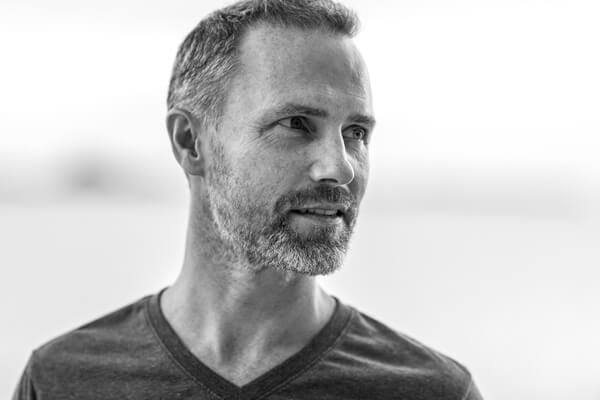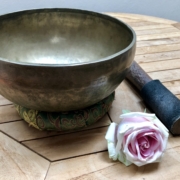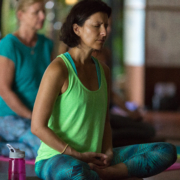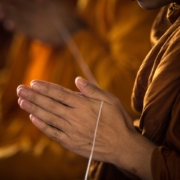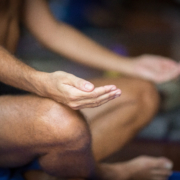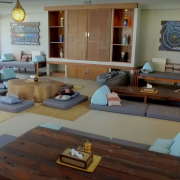 https://samahitaretreat.com/wp-content/uploads/2024/03/DJI_20231220135922_0003_D-scaled.jpg
1920
2560
Kirsten Mia
http://samahitaretreat.com/wp-content/uploads/2024/01/samahita-logo-v2.svg
Kirsten Mia2024-03-20 15:30:592024-03-20 15:30:59Travel, explore, be curious!
https://samahitaretreat.com/wp-content/uploads/2024/03/DJI_20231220135922_0003_D-scaled.jpg
1920
2560
Kirsten Mia
http://samahitaretreat.com/wp-content/uploads/2024/01/samahita-logo-v2.svg
Kirsten Mia2024-03-20 15:30:592024-03-20 15:30:59Travel, explore, be curious!Yoga as a Light on Life Change

Dear friends,
Consider yoga as just a word, or term, for the process of being internally connected, a light to look at oneself, separate to outside study. One might ask, “what supports such a process?” Hence the many approaches within yoga and spiritual paths in general. My point is that yoga is a term for that, “internal focus and connection”, just as gravity is a term for a certain exerted external force. In that sense yoga is woven into a life. How we treat people and how we manage ourselves, our body included, is part of this. Thus the incredible techniques of yoga practice have developed and have space to continue to evolve. To promote such an internal awareness an effort at integrating the activity of the body with that of the mind, mediated by the breath, is required. This defines how asana then should be done, smooth, on the breath, heart rate in a normal range, so the inner physiology sets up an environment for internal (growing) awareness. Of course, at first one is challenged in asana but one works with the conditioning of it, not pushing it, not loosening either, till the system adapts and shifts over time. Though one may become flexible from asana, this does not mean it was done in a way that develops this inner chemistry that supports such an internal environment. One should feel good and energized, not just after practice, but all day.
I am often asked about doing yoga, (which mainly means asana) and other activity. In short, there’s no problem. What do you like to do and what is important to you?
Yoga should not force you to stop or change anything. If things happen in their own time then embrace the change, but never force. Given the above description of yoga all that is required is that when working out, you work out, when doing yoga, you do it as prescribed with an effort to connect internally. It is easy to mix up yoga asana with physical exercise.
This produces a different internal chemistry, setting off a different physiological reaction, quite separate to that as prescribed for asana and yoga in general. It has been my own experience to enjoy other workouts, high intensity, aerobic and anaerobic, functional fitness, and to receive real benefits in terms of body-core strength, and to relish in the cardio work out on a bike. Asana practice then becomes purely about the asana and an internal connection.
Pranayama continues from there along with other sitting techniques. The point is simple: enjoy your workout! In today’s world, it is highly needed. Embrace your asana, pranayama, and/or sitting practices with the appropriate inner physiology to literally support the internal connection. This is part of taking care of the body, taking care of the breath, understanding and going beyond the mind.
Years ago the yogi would have walked everywhere, which was an intense work out, or maybe worked on a family farm, or climbed numerous hills if living remotely. Physical activity of the past has been taken over by our modern, technologically advanced, materially comfortable world. Yet, our bodies still crave it and need it.
Keep moving. Stay stable. Our evolutionary wiring demands it!
Swami Kuvalayananda, teacher of Tiwariji, was famed for being a leading Indian martial artist, adept in all physical practices, but also practicing asana, diving deep into pranayama, and achieving some of that rare level of transformation internally.
To work out properly is necessary for the body. Then to nurture and condition it further, with asana, is essential. In addition, our breath and metabolism are attended to by pranayama to direct the internal growth towards the meditative experience. Equally, sitting and examining oneself, through the body, on the thought, perhaps including mantra, moving into silence, is all part of a healthy life.
It is this broad spectrum of health, wellbeing and spirituality that has urged me to include it in one program but with their own separate domains. Working out cannot just mean the body. The breath and mind are key, not just for concentration skill, but for purity of heart. Equally, though asana tends the body especially well, our “stone-age” bodies in modern times need a functional fitness routine and cardio challenge. If you try to do that in asana then the asana is destroyed, the inner physiology altered, and a different effect occurs. Instead, doing them separate and fully optimizes both the inner and outer effect.
This is the motivation and logic behind YogaCoreCycle. To give attention to all aspects of body-breath-mind and allow one the personal freedom to put in different time on different areas as per one’s inner draw. You can do only the yoga practices or do only the physical work out or take time in separate practice with them. Either way, in differing measures, we all need all these aspects. My first and primary love is yoga practice. But I need to work out and love it. My body does not suffer in asana. On the contrary, I am just as open but more satisfied. The key is just to separate the workout from the asana practice. Keep that in mind as you practice.
Pranayama is by its nature a separate practice, along with the other sitting techniques. But all part of yoga, all part of a global wellbeing approach. At Samahita we continue our typical yoga offering but now we also ‘up the ante,’ by including functional fitness routines and cycle cardio workouts. Our long-term student/teacher /collaborator, Arielle Nash-Degagne, was key in devising many of the fitness routines based on her expertise in the field. David Tilston from the UK has joined us to lead the fitness program. Please check him out online. He is highly trained in physical and yoga routines and is just an all-round nice guy. So when you come next it is up to you, you can stick with the yoga program or supplement it, alternate it, any combination you like actually, with the other fitness practices. Whatever it is, YogaCoreCycle covers the spectrum of wellbeing from meditation, to breath with pranayama, to body connection with asana, to body strengthening with functional fitness and cardio.
I look forward to seeing you …… on the cushion … on the mat … on the TRX … on the bike … on the floor (nice savasana).
Love and Om,
Paul
Dr. Paul Dallaghan’s expertise with breathwork, body and meditative practices comes from three sources: (1) three decades of daily dedicated practice and teaching these techniques; (2) uniquely acknowledged in the Yoga tradition by the title of “Master Yogi-Prānācharya (expert in breath)”, following an immersion in the original culture through one-on-one direct training in practice and study of ancient texts; (3) a PhD in doctoral scientific research at a leading US university (Emory) covering both the tradition and science of yoga and breath practices in terms of stress, health and aging. As a result, Paul occupies a unique space to impart genuine teaching and science on the breath, body, and meditative practices, seen as a Teacher-of-teachers and identified to carry on the tradition of Pranayama. His sincere and ongoing role is to teach, write and research, to help put out experienced and authentic information on these areas of how we live, breathe and be, to help people improve their mental and physical health, and live more fulfilling lives.
For more on his background see his bio
More from the Samahita Blog
